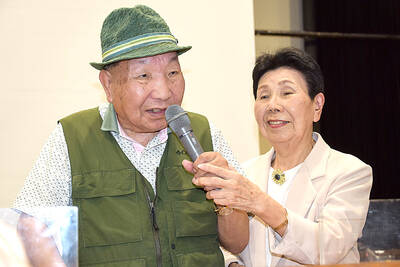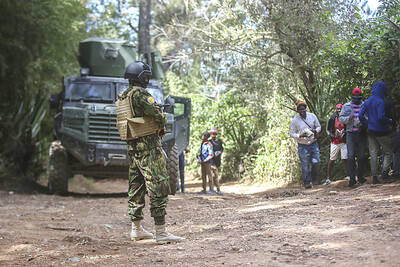The world's biggest bang wiped out the dinosaurs in a cataclysm that swathed our planet in choking dust -- or at least that is what many paleontologists claim. Others say dinosaurs died out gradually as Earth's climate and geology changed.
It sounds a typical academic dispute -- but last week it erupted into open warfare. Allegations have been made of deceit and unethical behavior. One scientist is even alleged to have held back inconvenient evidence.
"This affair has become an object lesson on how partisan and unethical the whole dinosaur controversy has become," said Norman MacLeod, keeper of paleontology at London's Natural History Museum.
"Young scientists are now refusing to get involved in this field because no matter what they say it will offend someone and damage their careers. It's like the nature-nurture debate. No matter what you say, someone will hate you for it."
The furore focuses on a massive drilling project set up to study the Chicxulub crater in Yucatan. Buried under half a mile of rock, the crater was created 65 million years ago when Earth was hit by a meteorite 16km in diameter. The blast would have blotted out the sun for decades, or even centuries, many researchers claim. Given that around this time the dinosaurs became extinct, many scientists made a direct link. Denied sunlight and food, most of the world's animals would have starved, and choked, to death.
But others disagree. Volcanoes, global warming or sea level changes were responsible, they say -- pointing to evidence that most dinosaurs became extinct before the explosion and to the fact that many large animals such as alligators survived this alleged catastrophe. Things weren't that bad, they say.
In a bid to resolve the dispute, a US$3 million project was launched in Yucatan two years ago. Researchers drilled a pipe into the Earth's crust to bring back samples of the meteor and crater wall. By studying what happened just before and just after the meteorite impact, scientists would glean critical insights, it was argued. For example, it would show if all life was extinguished in the millennia that followed the impact.
In 2002 the first samples were brought up. To the disgust of Mexican geologists, and to many scientists who doubted the Big Blast theory, these were entrusted to Jan Smit, a geologist at the Free University of Amsterdam and a leading supporter of the meteorite hypothesis. Promising to cut up the samples and distribute them to project scientists, Smit left with the precious Chicxulub remains. A year later, many scientists were still seeking the promised samples.
"We were dismayed," geochemist Erika Elswick of Indiana University in Bloomington states in the current issue of Nature. "There was no explanation given, no apology."
Eventually some samples were sent out, but most were too small for experiments. Dismay turned to fury. Researcher Gerta Keller, of Princeton University, pressed Smit and at last got a good set of samples. At the European Union of Geosciences conference in Nice, she presented her results, which were a bombshell.
Her research, Keller claimed, clearly showed that marine plankton, far from being killed off by debris blotting out the sun, thrived for hundreds of thousands of years after the crater was created. The meteor that struck at Chicxulub was not responsible for mass extinctions, she concluded.
Nor is Keller reticent in her interpretation of Smit's behavior.
"He tried to postpone our results so that he could remain unchallenged at that meeting," she states in Nature.
Smit dismisses the allegation as "ridiculous." He blames the delays on his busy schedule and poor communications by those running the project. He also claims Keller misidentified some fossils in her samples.
The row is far from over. Project scientists are preparing papers containing results of studies of the samples they obtained from Smit and these will be published in a special issue of Meteoritics and Planetary Science next year. Few doubt it will resolve the issue. As MacLeod says: "It's no longer about science. It's about reputations."

A French-Algerian man went on trial in France on Monday for burning to death his wife in 2021, a case that shocked the public and sparked heavy criticism of police for failing to take adequate measures to protect her. Mounir Boutaa, now 48, stalked his Algerian-born wife Chahinez Daoud following their separation, and even bought a van he parked outside her house near Bordeaux in southwestern France, which he used to watch her without being detected. On May 4, 2021, he attacked her in the street, shot her in both legs, poured gasoline on her and set her on fire. A neighbor hearing

DEATH CONSTANTLY LOOMING: Decades of detention took a major toll on Iwao Hakamada’s mental health, his lawyers describing him as ‘living in a world of fantasy’ A Japanese man wrongly convicted of murder who was the world’s longest-serving death row inmate has been awarded US$1.44 million in compensation, an official said yesterday. The payout represents ¥12,500 (US$83) for each day of the more than four decades that Iwao Hakamada spent in detention, most of it on death row when each day could have been his last. It is a record for compensation of this kind, Japanese media said. The former boxer, now 89, was exonerated last year of a 1966 quadruple murder after a tireless campaign by his sister and others. The case sparked scrutiny of the justice system in

DITCH TACTICS: Kenyan officers were on their way to rescue Haitian police stuck in a ditch suspected to have been deliberately dug by Haitian gang members A Kenyan policeman deployed in Haiti has gone missing after violent gangs attacked a group of officers on a rescue mission, a UN-backed multinational security mission said in a statement yesterday. The Kenyan officers on Tuesday were on their way to rescue Haitian police stuck in a ditch “suspected to have been deliberately dug by gangs,” the statement said, adding that “specialized teams have been deployed” to search for the missing officer. Local media outlets in Haiti reported that the officer had been killed and videos of a lifeless man clothed in Kenyan uniform were shared on social media. Gang violence has left

US Vice President J.D. Vance on Friday accused Denmark of not having done enough to protect Greenland, when he visited the strategically placed and resource-rich Danish territory coveted by US President Donald Trump. Vance made his comment during a trip to the Pituffik Space Base in northwestern Greenland, a visit viewed by Copenhagen and Nuuk as a provocation. “Our message to Denmark is very simple: You have not done a good job by the people of Greenland,” Vance told a news conference. “You have under-invested in the people of Greenland, and you have under-invested in the security architecture of this